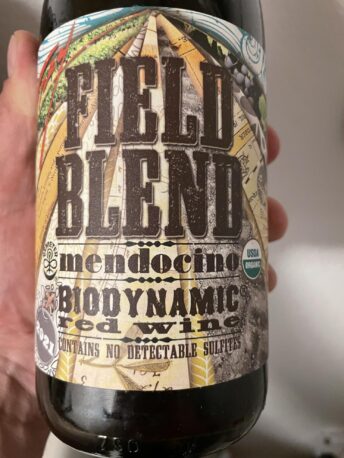- Your cart is empty
- Continue Shopping
Making Homemade Vinegar
Thank you for purchasing our Michael’s MOV – Mother of Vinegar. Here are the detailed instructions to supplement those on the labels to help you make the best batch of vinegar possible!
What is Mother of Vinegar ?
Mother of vinegar is a colony of healthy good bacteria (don’t gasp). These are the good bacteria called Acetobacter. Acetic acid bacteria are a group of Gram-negative bacteria which oxidize sugars or ethanol and produce acetic acid during fermentation. The acetic acid bacteria consist of 10 genera in the family Acetobacteraceae. They perform the same purpose for making vinegar as yeast does to make wine. They form the mother on the surface since they require oxygen to convert wine to vinegar and the surface is where the air is at.
Materials for Vinegar Vessel
Vinegar is essentially a dilute acetic acid. While this gives vinegar its great properties and its tangy taste, it can also be corrosive if stored in the wrong materials. You can use any type of container you want, but you are best to limit it to the following: glass, wood, stainless steel, food-grade high density polyethylene (HDPE) plastic, we prefer and create ours in glass. These materials will withstand vinegar indefinitely and add no impurities or tastes (except for wood which imparts flavor depending on the type of wood), which some find the rich flavor of the wood to be nice tasting.
Do not use anything containing brass, aluminum, copper, iron, nylon, or plated steel like galvanized or zinc coated steel. These will corrode and impart a poor flavor or even toxic chemicals.
No Detectable Sulfites Wines are best

No Detectable Sulfites Wines are best if you cant find any here is what you will need to do.
What about wine sulfites? A lot of people try to make wine vinegar and fail. They are frustrated, but don’t realize almost all modern commercial wines are made not to become vinegar on purpose. This is done by adding sulfites, which inhibit the vinegar bacteria, as this would ruin they batches of wine turning it into a less financially viable return. Typically red wine has 20- 40 ppm of sulfites. Add hydrogen peroxide. This is completely harmless. Just use the regular 3% hydrogen peroxide from any drugstore. Each mL you add and stir in removes 10 ppm of sulfites from a bottle of wine. A good amount per bottle is ½ teaspoon which is 2.5 mL. This will almost assuredly reduce the sulfites to a manageable level.
How strong will my vinegar be?
In theory, every percent alcohol should transform into a percent acid. Standard store vinegar is 5% acid and some red wine vinegar is up to 7%. However, the actual conversion is about 80-90% efficient. if you want 5% vinegar, start with 6% diluted wine.
- For wine vineagar, take 2 parts 12% wine and dilute with 1 part water and 1 part Michael’s OV – Red or White Wine Mother of Vinegar. For a typical 8 oz. Jar this will be 16 oz. Of wine, 8 oz. Of water, and 8 oz mother of vinegar. Likewise, diluting 14% wine with the same procedure will get you 6% vinegar.
- For beer or cider, use less dilution because the alcohol content is lower. For beer/cider of alcohol content of > 8% – 10% ABV: add 8 oz. of mother of vinegar to 16 oz. of the beer/cider of your choice to make 24 oz. of vinegar. For 6% ABV to 8% ABV: add 8 oz. of mother of vinegar to 24 oz. of the beer/cider of your choice to make 32 oz. (1 qt.) of vinegar.
- For rice wine (e.g. sake or soju), the same dilution rules apply as they typically do with regular wine since it has a similar alcohol content.
How long does vinegar take?
It can take anywhere from 6 – 12 weeks or more depending on several factors. Patience is key, but there are two steps one can take to speed up the process:
- Air contact area: if you are using a narrow bottle, the mother only has a small surface to form on. The size of the mother is directly related to the speed of vinegar fermentation so a wider vessel is better if speed is a concern.
- Temperature: the best temperature for vinegar fermentation is 80-85 degrees Fahrenheit. If you can’t maintain that, don’t stress. Just try not to get it cold, i.e. below 65 degrees. If your mother sinks, it’s no big deal. As the bacteria grow and produce vinegar, the mother can get heavier and heavier until it sinks.
When is my vinegar done?
There are several ways to determine this. The most common is to sample the smell and taste until it is to your liking. Remember, vinegar is pungent and acidic. More accurately, one can use a pH meter. These can cost between $25-$75 at a homebrewing or hydroponic store. Once your pH is below 4, your vinegar is safe and almost all vinegar is finished with a pH less than 3.5. The most advanced method is titration. This involves a simple chemical analysis of the vinegar using a base and a pH color indicator and a base like sodium hydroxide. This is the best method to determine the acidity of your vinegar. This can be done via titration kits such as those available at wine making supply stores. If you have any other questions, or it seems not to be working, feel free to email us at MichaelsOrganicHoney@gmail.com Have a fun time!
Notes:
- Moving or shaking your vessel can cause the mother to sink. So make sure it is in a snug and safe place when you start fermentation.
- Mold is a rare, though common problem with making vinegar. In some cases mold can grow on the mother of vinegar and in this case, the batch should be discarded. Preventing mold can be done in several ways.
- Make sure your vinegar vessel is covered during fermentation. This gives spores less of a chance to enter.
- Make sure the vinegar vessel is not in an area with mold, such as food, and don’t keep it near air conditioning vents which may expel spores. Moldy or mildewy basements can also present an issue.
- Organic wines can have more issues with mold growth on the mother. Organic wine growers are more limited in their fungicide and sterilization options so that there can be a higher mold spore count in the final product. This is harmless to humans and doesn’t affect the wine, however, it can come out in vinegar production.
- One of the best ways to prevent this is checking the pH of the final mixture (wine + water + mother of vinegar). The pH should be below 4 and preferably around 3.75, if not, it may allow mold growth. If you do not have a pH meter, substituting the 8 oz. water portion of the mixture with 4 oz. water and 4 oz. white distilled vinegar can help ensure a low pH without adversely affecting flavor. Similar cautions apply to homemade wines.


